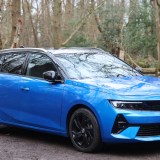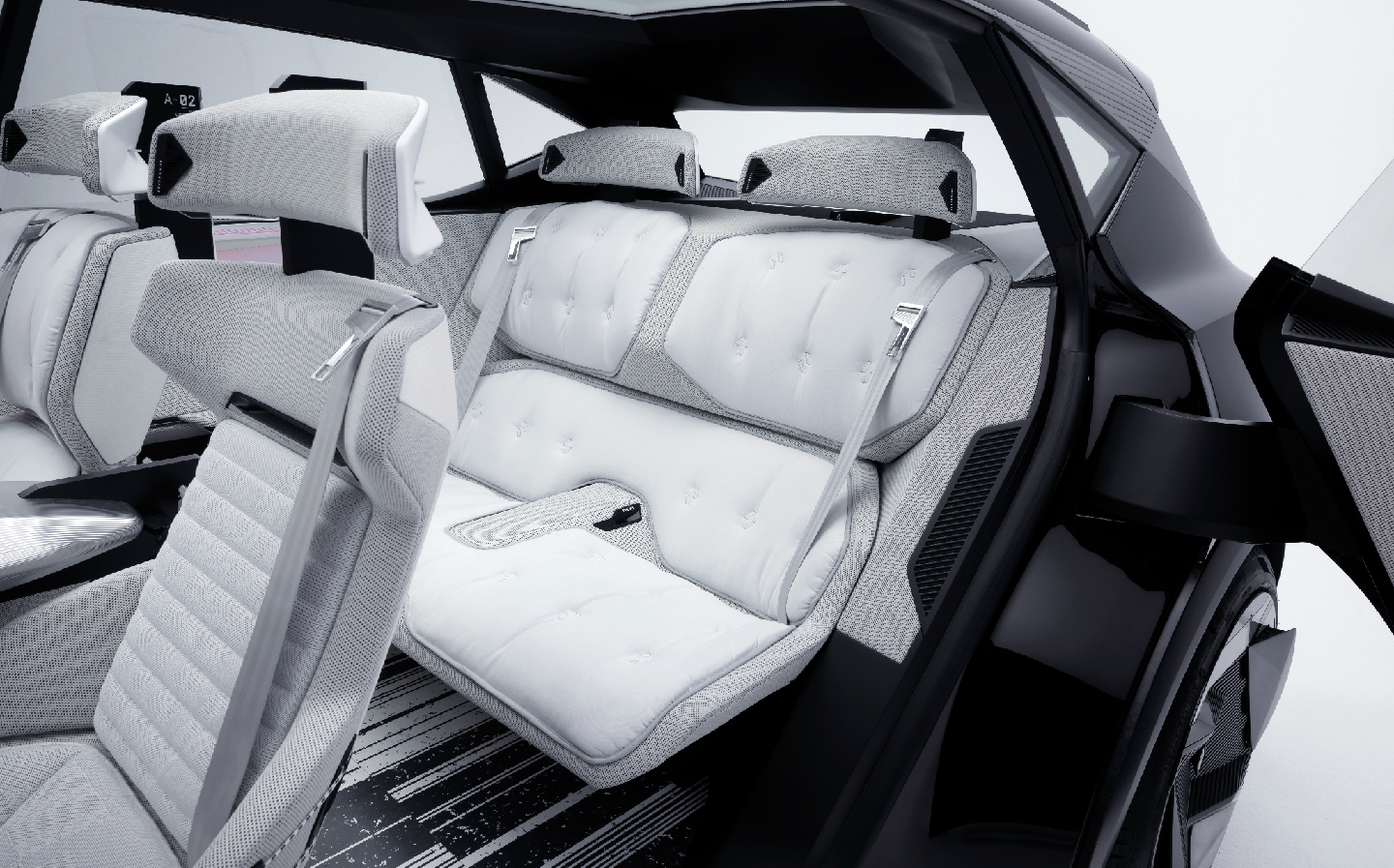Renault's eco-friendly Scenic Vision concept is battery-electric for everyday driving but deploys hydrogen for long trips
The future of hybrids?
Renault believes its new zero-emission Scenic Vision concept car offers a convenient solution to quick refuelling on long trips: combining battery-power with hydrogen fuel cells.
The “one-of-a-kind” battery-hydrogen hybrid system means the Scenic Vision can be driven in pure-electric mode for daily driving, using a new-generation 160kW (215bhp) electric motor and a lithium-ion battery pack with a 40kWh battery capacity.
That’s a little larger than the pack found on the Mini Electric (32.6kWh), which has an official range of up to 141 miles per charge, but smaller than the batteries found on most other modern EVs. A small battery means reduced weight, and therefore improved efficiency and better handling characteristics, Renault says.
But long journeys should be a breeze — in the future, at least — thanks to the addition of a 2.5kg hydrogen tank at the front of the car, which feeds a 15kW fuel cell stack under the floor at the rear.

The fuel cell works as a range-extender for the battery, converting the hydrogen gas into electricity by combining it with oxygen from the air — the by-product being H2O (water). The resulting electrical charge is then stored in the battery pack.
By deploying the fuel cell stack, the maximum range of the Scenic Vision is around 497 miles, according to Renault. And if you can fill up the tank again, which takes less than five minutes, you can keep motoring.
At present there are only a handful of hydrogen filling stations in the UK but other countries in the world have more developed refuelling networks, and Renault believes the technology in the Scenic Vision is “viable for the coming decade”.
Another clever use for the hydrogen fuel cell is for maintaining temperature in the battery pack, so that when the weather is cold the BEV system is optimised for range.
Upping the eco credentials
With Renault aiming for “carbon neutrality” in Europe by 2040, and worldwide by 2050, it has pulled out all the stops when it comes to the entire lifecycle of the Scenic Vision Concept.
Charging the battery using renewable energy and refilling the hydrogen tanks with “green hydrogen”, which is also produced using renewables, is the most obvious sign of it eco-potential, but in addition the electric motor, based on the one found in the new Mégane E-Tech Electric, uses zero rare-earth elements.
Meanwhile the battery pack is fully recyclable and Renault is aiming to decarbonising the energy used during assembly as well as create a more responsible supply chain. By doing so, the carmaker believes is can reduce the batteries’ carbon footprint by 60% compared with its existing EVs.
But Renault is looking beyond the batteries. Alongside the electronic components, the company has identified five other core materials that create 90% of the carbon footprint in its supply chain: steel, aluminium, polymers, glass and tyres. By working with its 15,000 suppliers it hopes the overall carbon footprint can be reduced by 30% over the next eight years.

The Scenic Vision Concept shows what can be done: 95% of its materials are recyclable, and 70% come from recycled materials in the first place. As you can see from the label in one of the images supplied by Renault, the floor is made of 45% milk bottles and 55% plastic pipes.
Renault says that overall, the car’s carbon footprint is 75% lower than that of a conventional electric car. The company is aiming for an electric-only model range by 2030.
Previews a new model
The Renault Scenic Vision is just a concept at this stage but the company says the exterior design previews a new family-focused battery-electric model, set to be unveiled in 2024, and gives an insight into the future Renault vehicle line-up.
Measuring 4.49m long the Renault is 14cm shorter than the Hyundai Ioniq 5, which is deceptively large, but very similar in width and height (1.9m by 1.59m).
With its skateboard-like structure, the large (21in) wheels are pushed far into each corner, which affords more room inside for passengers, and the rims have flaps that are open below 6mph to increase cooling but close at higher speeds, for improved aerodynamics.

The headlights and daylight running lamps ape the new Renault logo in design, while the grille features a flash diamond-shape animated welcome sequence when the car is unlocked.
Opening the doors involves touching the Renault logo on the window frame, while the suicide doors and absence of a B-Pillar allow easy entry to and egress from the rear.
Inside, the car is clearly a concept but features technology that could come to future Renaults. The ability to recognise passengers and adjust seating and settings based on height and pre-set preferences is not a huge stretch of the imagination, technically-speaking, and is already available on some production cars.
However, other features are more futuristic. The steering wheel shaped like a video game controller, for example, and the ultra-thin dashboard with its large info screen and 10 additional “widget screens”, which can be set to display preferred functions such as music, air con, drivetrain settings and interior lighting. Content from the widgets can be transferred to the large screen on the dashboard.
Related articles
- If you were interested in Renault’s eco-friendly Scenic Vision concept and its hydrogen-battery hybrid system, check out the NamX HUV with removable hydrogen capsules — the solution to hydrogen refuelling issues?
- Did you know the new Extreme H series is a hydrogen off-road racing championship devised by the Extreme E BEV founders
- And check out what James May had to say about the battery vs hydrogen electric car debate
Latest articles
- Aston Martin Valkyrie AMR-LMH hypercar hits track ahead of 2025 Le Mans challenge

- Porsche has begun testing the electric Cayenne

- Cupra Leon 272 eHybrid 2024 review: Bigger battery, better tech … but is it a Cupra?

- Porsche 911 GTS 2024 review: Hybrid heresy or more Stuttgart genius?

- Extended test: 2023 Vauxhall Astra Sports Tourer GS PHEV

- Ford Capri revival has faced a lot of flak… but are buyers put off? Here’s what visitors to the Festival of Speed had to say

- F1 2024 calendar and race reports: What time the next grand prix starts and what happened in the previous rounds

- ‘No timeframe’ for how long Volvo’s returning estate cars will be on sale in UK

- Kia Picanto 2024 review: Updates add spice to cute Korean city car




















